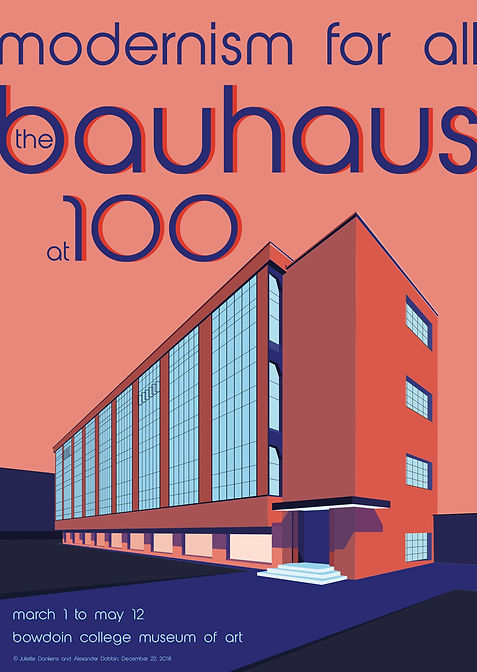bauhaus exhibition
Posters designed by Alexander Dobbin and Juliette Dankens for “Making the Modern World: The Bauhaus at 100.” The exhibition opened March 1, 2019 and closed May 12, 2019 — guest curated by Alexander Dobbin and Juliette Dankens for the Bowdoin College Museum of Art.


From Berlin to Hangzhou to Brunswick, centennial celebrations of the Bauhaus are taking place around the world. But its anniversary alone does not justify the celebration of the revolutionary design school. The questions the Bauhaus contributed to art, design, and architectural discourse—about how art and craft should be taught, the nature of good design, the relationship between art and industry, the effects buildings have on their occupants—are still being asked today with amplified urgency.
Following the aftermath of World War I, the Bauhaus was founded in 1919 in Weimar, Germany by architect Walter Gropius amidst political and social dissent. Seeking to capitalize on changing times, the school’s manifesto begins with a decisive statement, “A breach has been made with the past.” As such, in stark opposition to traditional European art academies, Gropius created a new, interdisciplinary curriculum for young, creative men and women that brought art, craftsmanship, and architecture into optimal alliance: at the Bauhaus, the building embodied the synthesis of all arts. This took shape through fundamental theory courses, called the Preliminary Course, and experimental, craft-based studios, or Workshops, taught by leading avant-garde artists, known as Masters, including Lyonel Feininger, Wassily Kandinsky, Paul Klee, Josef Albers, Oscar Schlemmer, and Lásló Moholy-Nagy. The Bauhaus established a new and revolutionary language of art and design pertinent to the changing technical, economic, and social realities of the time.
Despite its internal reorganizations and its relocations to Dessau in 1925 and later to Berlin in 1932, the Bauhaus remained true to its basic mission as an experimental laboratory for the building of the future.
